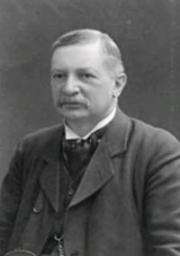April 28, 2009 weblog
Scientists Make First Observation of Unique Rydberg Molecule

(PhysOrg.com) -- When Enrico Fermi investigated the Rydberg atom in the '30s, he never imagined that the giant atoms could form molecules. Later, in the '70s and '80s, theoretical physicist Chris Greene predicted that Rydberg molecules could exist. But it wasn't until recent advancements in ultracold physics that such an observation has been made possible. A recent study now shows that the Rydberg molecule can be created in the lab, and its observation supports decades of theory.
In a paper published in Nature, scientists from the University of Stuttgart in Germany and the University of Oklahoma in the US explain how they have created Rydberg molecules with a calculated lifetime of 18 microseconds. Their Rydberg molecule consists of two rubidium atoms, one a Rydberg atom and one a groundstate atom. Connected by a very weak chemical bond, the two atoms are separated by about 100 nm (several thousand Bohr radii), which makes them much farther apart than atoms in most other molecules.
As opposed to groundstate atoms, Rydberg atoms are excited atoms that have one electron in an outermost orbit very far from the nucleus (a state with a very high principal quantum number). For this reason, Rydberg atoms are large and can exhibit unusually long-range interactions. For example, scientists have previously investigated the bonding of two Rydberg atoms, which occurs across very large internuclear distances.
In the current study, the scientists investigated a different bonding interaction, which occurs between a Rydberg electron and a groundstate atom. As the researchers explain, this bond arises from the low-energy scattering of the Rydberg electron with the negative scattering length from a groundstate atom when the atoms are at a specific location within the Rydberg electron wavefunction.
To observe these giant molecules, the researchers prepared a magnetically trapped sample of ultracold rubidium atoms. As the rubidium cloud cooled, the atoms in the gas moved closer together. At temperatures close to absolute zero (-273°C), the atoms' nuclei were separated by the critical distance of 100 nanometers. The researchers then excited some of the atoms to the Rydberg state with a laser.
"If we have a gas at the critical density, with two atoms at the correct distance that are able to form the molecule, and we excite one to the Rydberg state, then we can form a molecule," said Vera Bendkowsky of the University of Stuttgart, lead author of the study.
Using spectroscopic techniques, the researchers could investigate these exotic molecular states, such as determining the 18-microsecond lifetime of the molecules. The experimental results agree well with predictions, confirming long-held fundamental atomic theories. Based on the results of their spectroscopic characterization, the scientists predict that other states could be realized and investigated in the near future. One possibility is the realization of "trilobite molecules," which are bound states involving a Rydberg electron with large angular momentum.
More information: Vera Bendkowsky, Bjorn Butscher, Johannes Nipper, James P. Shaffer, Robert Low & Tilman Pfau. "Observation of ultralong-range Rydberg molecules." Nature, Vol 458, 23 April 2009, doi:10.1038/nature07945.
via: BBC News
© 2009 PhysOrg.com


















